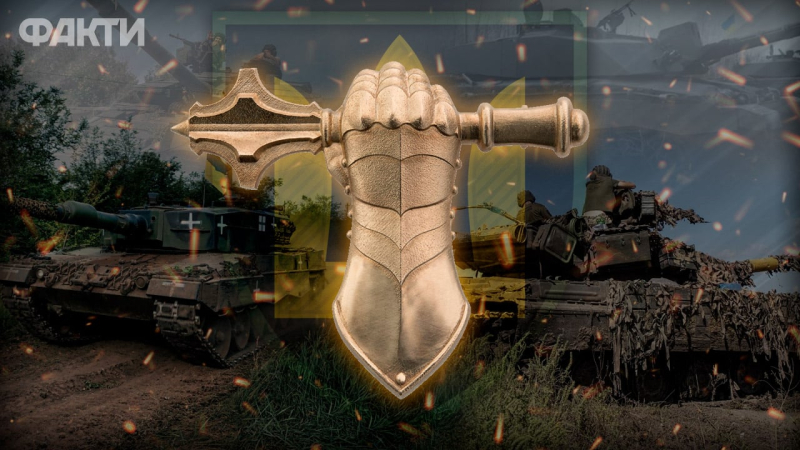
Tank Troops Day used to be celebrated annually on the second Sunday of September, namely, September 10. Now it is celebrated on September 14. Previously, the holiday was called Tanker's Day, and after the decree of the President of Ukraine Volodymyr Zelensky dated September 9, 2023, it was called Tank Troops Day. The tank army is a reliable armor for our infantry, although in modern conditions the concept of using tanks must be radically revised.
The mechanized and tank troops of the Ground Forces of the Armed Forces of Ukraine include mechanized, motorized infantry and tank brigades. The mechanized and tank troops are armed with T-64, T-72, T-80 tanks; armored personnel carriers, BMP-1, BMP-1 with a module, BMP-2 and other types of weapons.
ICTV Facts asked military and political observer of the Information Resistance group Alexander Kovalenko and military analyst Evgeny Dikiy about what tanks we have in service now and how to use tanks in modern warfare.
Now watching
What tanks does Ukraine have in service
According to expert Alexander Kovalenko, the entire tank fleet The armed forces can be divided into three categories: Soviet tanks, captured tanks, and tanks from Western partners.
The first category includes Soviet tanks, their upgraded versions (T-64BV, T-64BM Bulat, T-80BV, T-72AMT) and a modern Ukrainian main battle tank developed by the Kharkov Oplot Machine-Building Design Bureau. As for Oplot, this is more of a symbolic thing, because at the beginning of a full-scale war we had 10 of them and one more experimental tank from 2021.
It is worth noting that, for example, the Ukrainian modification of the T-72AMT tank was better than its Russian counterpart, the T-72 model of 2016, at one time.
“Russian Lend-Lease”, or captured tanks. These are mainly Soviet tanks (T-62, T-54, T-55), because there are still a lot of them in Russia. However, our military managed to capture quite a few T-90 Proryv tanks — this is a third-generation Russian main battle tank, which is a deep modernization of the T-72B.
If we talk about Western-style tanks, these are German Leopard 1, Leopard 2A4, Leopard 2A6 tanks, and British Challenger 2. By the way, Leopard 1 tanks perform quite well at the front. Also, in 2023, Ukraine received American Abrams heavy tanks.
But such a variety of tanks is a forced temporary solution. It is clear that in the future, the Ukrainian armed forces should have only one type of tank, because maintaining so many types is extremely unprofitable, both economically and technically.
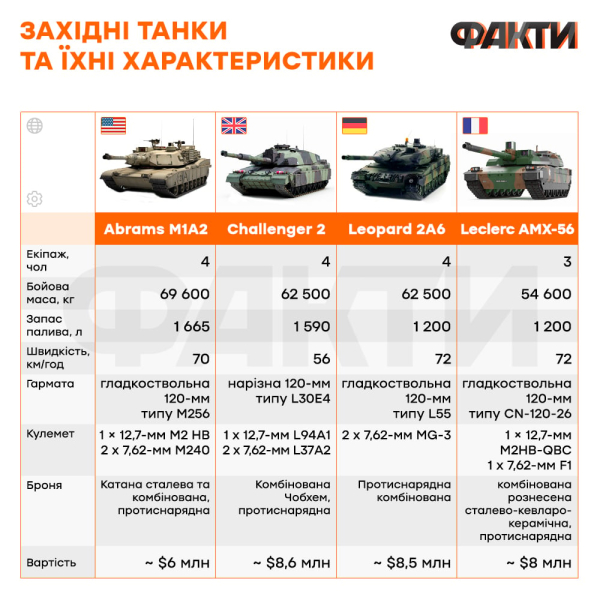
Former company commander of the Aidar battalion and military analyst Evgeny Dikiy in a commentary to Fakty ICTV noted that today the tank fleet of the Armed Forces of Ukraine is a kind of zoo, where models are presented, starting from the 60s of production up to and including the 90s.
— We have the Soviet line. The most common — tank is the T-64. We also had a certain number of T-80. And during the war, captured T-62 and T-72 tanks were added, partly supplied by our allies, partly also captured. And today there are probably even more T-72 tanks than T-64, – said Evgeny Diky.
Oplot tank
According to the military man, it would be logical for Ukraine to have the Oplot as our main tank in the short term, but not in its pure form, because it is for the Soviet caliber. It makes sense for us to switch to compatibility with NATO ammunition, that is, 120 caliber.
ICTV Live Related materials Zelensky and Syrsky: Tank troops are the steel fist of the Ukrainian Armed Forces
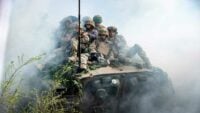
Explosions in Odessa and the region: debris from the Shaheeds caused destruction in two districts
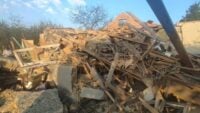
Online map of military operations in Ukraine: where the fighting is taking place as of 09/14/2024

Explosions in Kharkov on September 14: Russia hit the city with a KAB

Russia attacked Ukraine with 76 Shaheeds at night: how many were destroyed by air defense forces

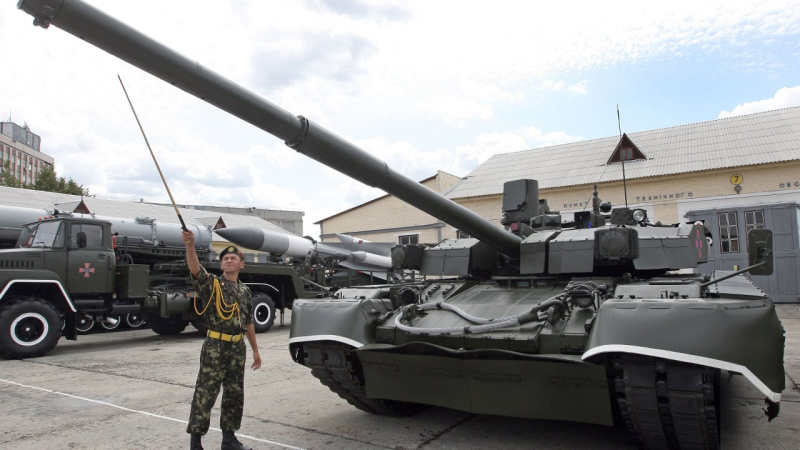
Photo: Getty images
The Oplot has a very good chassis, but there are problems with the gun. Therefore, we can solve the issue of producing this tank through industrial cooperation. For example, we manufacture the chassis, and we will order a turnkey turret from one of our allies.
— An expensive option could be a turret with a gun, produced by the German concern Rheinmetall. This option is probably the most technologically advanced, but, on the other hand, expensive. Then there could be the Belgian company Cockerill Maintenance, which also offers a turret with a gun that adapts well to various chassis, including wheeled ones. But there is a nuance — their turret is very light. Therefore, the question arises whether it is sufficiently protected, – notes Evgeny Dikiy.
By the way, this is an eternal problem in armored vehicles, when you need to find a balance between weight and protection. After all, the heavier the tank, the better protected it is. Western tanks, such as Challengers, and especially Abrams, are very heavy. There, manufacturers focused on maximum protection at the expense of weight.
And the Ukrainian war showed that the mobility of the vehicle actually weighs more than protection. And in this sense, the chassis of our Oplot is promising, since this tank is quite light – 48 tons.
You can also consider cooperation with the Turkish company Aselsan, which offers its new turret for modernizing old tanks, for example, the T-72. This could also be a solution for the new Oplot.
In the long term, according to Yevgeny Dikiy, it would be possible to revive the long-standing development of the Kharkov Armored Plant – Project 490 Belka (late 1970s). It is clear that in its pure form it is no longer relevant, but at that time this project had solutions that were far ahead of their time. Therefore, in the future, Ukraine may well modernize the project and implement it at the level of 21st century technologies.
In addition, there is a consensus in the West to switch to a 140-mm caliber. Here, as an option, we can raise our old development – the 140-mm tank gun Bagira, which was made in one exhibition copy. Although there is another option – the French 140-mm tank gun Ascalon. And here the Ukrainians could cooperate with the French in developing a new generation tank.
Tank production in war conditions
According to Alexander Kovalenko and Evgeniy Diky, it is simply not possible to assemble Oplot tanks in war conditions. After all, defense plants are one of the key targets for enemy missile strikes.
— Oplot Ukraine cannot assemble tanks now, because the main enterprise, the Kharkiv Tank Plant, is not working yet. And it is also impossible to move this production abroad, because it is essentially a city within a city. The plant itself is essentially a small city, it is a large area, a large number of objects, – said Alexander Kovalenko.
Protecting tanks from drones
The realities of the war in Ukraine have shown that tanks are easy targets for attack drones. Therefore, it is logical that a new generation vehicle should have a modern integrated anti-drone defense system. This could be a rapid-fire anti-aircraft gun, or a laser anti-drone system, possibly an electronic warfare system. Although the effectiveness of electronic warfare, as our war has shown, is decreasing every month.
— The constant race between drone operators and electronic warfare operators continues. And now drone operators are ahead, – notes Evgeniy Dykyi.
According to Alexander Kovalenko, today tanks are used in more than 90% of cases as artillery — that is, firing along an elevated trajectory. Tank duels are extremely rare.
The bulk of tank losses are FPV drone strikes and mines. According to the expert, now it is necessary to create a completely new combat vehicle that will not be similar to anything that is in the fleet of any country in the world.
How the use of tanks in war has changed
Before the Russian-Ukrainian war, it was believed that the main purpose of tanks was tank duels and breaking through enemy defense lines. This was the case during World War II, when tanks traveled hundreds of kilometers in columns per day. This was also the case during Operation Desert Storm in the Persian Gulf (early 1991) and during the coalition invasion of Iraq in 2003.
Our war has changed everything, because it turned out that tanks are very vulnerable to drones. Therefore, advancing in tank columns and breaking through is no longer an option.
— Previously, tanks went forward, broke through the road, and the infantry followed behind. So now the infantry without armor goes first, covered from behind by one or two tanks. There are no more than two tanks now. Because many tanks — are a good target, – notes Evgeny Diky.
Now a tank is a very powerful sniper rifle on tracks. By the way, a tank has an advantage over artillery, which cannot be aimed so accurately. Artillery fires from afar and at an elevated trajectory. And a tank hits with direct fire.
Alexander Kovalenko notes that the Russians still resort to attacks with large mechanized groups, but this is only because they do not know how to fight in any other way. Large mechanized columns are an ideal target for the enemy, and in the current war this results in large losses for the occupiers.
Tank production in the Russian Federation
During the war, the Russians manufacture tanks. They themselves claim that up to 30 tanks roll off the Uralvagonzavod assembly line per month. Western intelligence agencies cite more skeptical figures – from 10 to 20 tanks.
The Russians get the rest of the tanks from their warehouses. But these vehicles need a good restoration, and it turns out that in order to assemble one tank, one or two others must be disassembled. In addition, Russian tanks used to run on French electronics, but now there are sanctions. And Russia has been buying ball bearings in Germany for the last 15 years because it has lost its own technology.
So, both new production and the restoration of Soviet tanks together give Russia 100 to 120 vehicles per month. This is comparable to how many enemy tanks the Ukrainian Armed Forces destroy. That is, the Russians break even at best. And when the Defense Forces manage to destroy up to 140 tanks in a month, the invaders are already accumulating a minus that they have nothing to cover.
According to Evgeny Diky, the Russians have tanks left, taking into account the old Soviet reserves, for about a year, no more. And if Ukraine reaches Uralvagonzavod with fire, then it is clear what will happen then.

